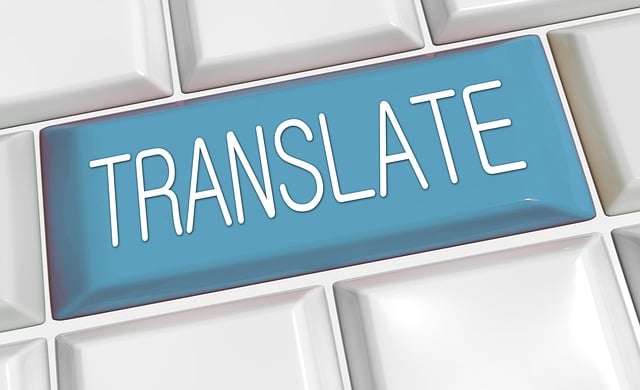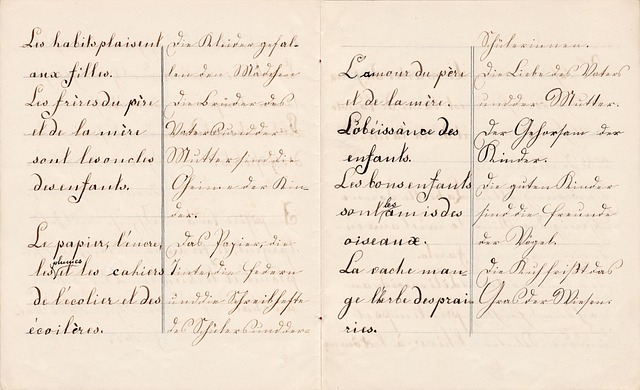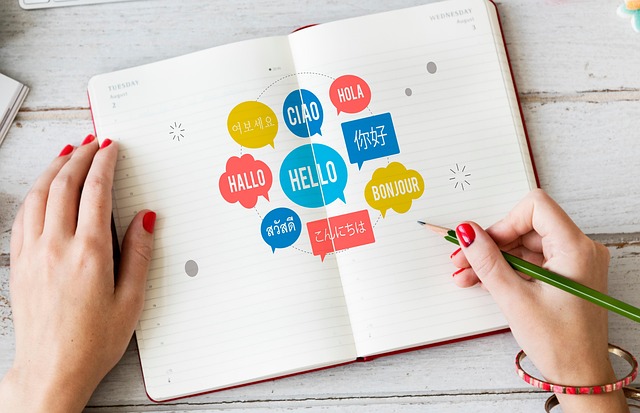Translation, an ancient art, relies on human expertise to capture cultural and contextual nuances. While automated translation tools like Computer-Assisted Translation (CAT) and neural machine translation (NMT) offer speed and efficiency, they lack the artistic adaptation and precision of human translators. For specialized fields and culturally sensitive content, human translators remain indispensable, ensuring accurate and contextually rich translations. Machine translation has significant merits for rapid communication and language learning apps, aiding internationalization efforts.
In the realm of communication, translation plays a pivotal role, bridging linguistic gaps and fostering global understanding. This article delves into the distinct worlds of human and automated translation, exploring their unique strengths and applications. Human Translation, an art form, involves expert interpreters who capture nuances and cultural subtleties. Automated Translation, driven by technology, offers instant communication but may lack precision. Understanding these differences is key to selecting the most effective approach for specific needs, be it for global business or personal communication.
- Human Translation: The Art of Language Interpretation
- Automated Translation: Technology's Role in Communication
- Unique Insights from Each Approach
- When Is Machine Translation Preferable?
Human Translation: The Art of Language Interpretation

Human translation is an art that has evolved over centuries, shaped by historical perspectives and cultural exchanges. It involves skilled interpreters who meticulously craft words to convey meaning while capturing nuances and subtleties inherent in language. Translators bring not just linguistic proficiency but also a deep understanding of context, idioms, and cultural references. This human touch is crucial for ensuring that translated content resonates with readers, respecting the original intent and tone.
From ancient scrolls to modern digital platforms, translation has been an indispensable tool for communication across borders. Over time, the field has embraced technological advancements, leading to the development of Computer-Assisted Translation (CAT) tools. While these tools aid in term precision and speed, they cannot replicate the human element—the artistic adaptation that makes a translation truly come alive. Visit us at AI-powered tools anytime for a glimpse into the future of efficient, yet human-centric, language interpretation.
Automated Translation: Technology's Role in Communication

Automated Translation: Technology’s Role in Communication
In today’s digital era, automated translation has emerged as a powerful tool to bridge communication gaps globally. This technology leverages advanced algorithms and machine learning models to interpret and translate text or speech almost instantaneously. Unlike manual translation, which often requires extensive human effort and expertise, automated systems can process vast amounts of data quickly. They are particularly useful for handling high-volume translation tasks, making them indispensable for international business communications, multilingual content creation, and language learning apps aimed at intermediate skills development.
While automated translation offers unprecedented speed and accessibility, it’s essential to understand its nuances, especially when comparing it to literal vs. free translation methods. Unlike literal translations that stick closely to the source text word-for-word, automated systems employ a more flexible approach known as free translation. This involves capturing the essence of the original content while adapting it to the natural flow and idiomatic expressions of the target language. Contextualization plays a crucial role here, ensuring that the translated output is not just accurate but also culturally relevant. To master translation skills, users are encouraged to explore various tools and visit us at translation techniques anytime to gain deeper insights into these processes.
Unique Insights from Each Approach

Human translation and automated translation, or machine translation (MT), offer unique insights and approaches to the art and science of converting text from one language to another. Human translators bring a wealth of knowledge and understanding to the table, leveraging their monolingual memory and bilingualism to capture nuances, idiomatic expressions, and cultural references that might be lost in automated systems. They can interpret context, intent, and emotion, ensuring accurate and culturally adapted translations that resonate with target audiences. This aspect is especially crucial for internationalization and localization efforts, where a deep understanding of the source and target cultures is essential.
On the other hand, machine translation technologies have made significant strides in recent years, offering speed and efficiency previously unattainable. These systems utilize vast linguistic datasets and advanced algorithms to provide instant translations. While they might not always capture the subtleties of human language, MT can be an invaluable tool for basic communication and initial drafts. With continuous improvements in neural machine translation (NMT) models, these tools are becoming increasingly sophisticated, even enabling some degree of international cultural adaptation. However, for high-quality, precise, and contextually rich translations, especially in specialized fields, the human touch remains irreplaceable. Visit us at human touch anytime for expert insights into the world of translation.
When Is Machine Translation Preferable?

Machine translation has its merits and is often preferable for certain tasks, especially when speed and volume are key. For large-scale projects or quick communication across languages, automated tools can deliver efficient results. These systems utilize advanced algorithms and neural networks to translate text with impressive accuracy, outpacing human translators in terms of turnaround time.
Consider language learning apps designed for intermediate skills; they often incorporate machine translation capabilities to aid learners. Additionally, historical perspectives on translation show that automated methods have evolved significantly, contributing to internationalization and cultural adaptation efforts. If you’re seeking a quick overview or wish to translate vast amounts of content, computer-aided translation tools can be an excellent starting point. Visit us at computer-aided translation anytime for more insights into these technologies’ capabilities and limitations.
In the realm of translation, both human and automated approaches offer unique advantages. Human translation brings artistry, cultural nuance, and contextual understanding to language interpretation, ensuring precise and idiomatic expressions. Automated translation, on the other hand, revolutionizes communication by providing instant, round-the-clock access to translations, making it ideal for low-context, technical, or high-volume content. Ultimately, the choice between them depends on the project’s specific needs, combining the best of both worlds for optimal results in the world of translation.
